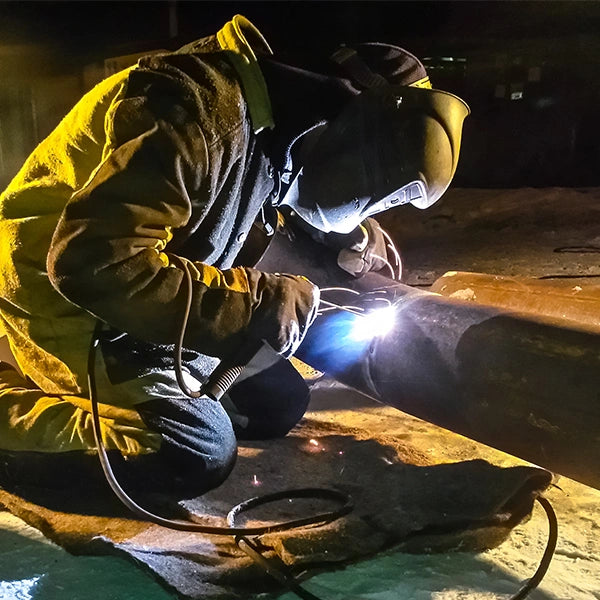Maximizing Your Welding WPS: Techniques for Improved Performance and Effectiveness
Maximizing Your Welding WPS: Techniques for Improved Performance and Effectiveness
Blog Article
Getting Welding Quality: Introducing the Secrets of WPS Application and Optimization
In the realm of welding, accomplishing excellence is a pursuit that hinges on the precise implementation and optimization of Welding Treatment Specifications (WPS) By diving right into the crucial components, methods, obstacles, and finest practices linked with WPS, a globe of welding excellence awaits those who are prepared to explore its depths.
Relevance of WPS in Welding
The Importance of Welding Treatment Specifications (WPS) in the welding sector can not be overemphasized, working as the foundation for ensuring uniformity, quality, and safety and security in welding procedures. A WPS gives comprehensive directions on exactly how welding is to be performed, consisting of important variables such as materials, welding processes, joint style, filler steels, preheat and interpass temperature levels, welding currents, voltages, travel speeds, and much more. By adhering to a distinct WPS, welders can maintain uniformity in their job, causing constant weld quality across various projects.

Key Elements of WPS
Going over the indispensable components of a welding treatment specification (WPS) is important for understanding its role in welding procedures. One crucial facet of a WPS is the welding procedure specification, which outlines the certain welding procedures to be utilized, such as gas tungsten arc welding (GTAW) or secured steel arc welding (SMAW) By integrating these vital aspects right into the WPS, welding treatments can be standard, ensuring high quality, effectiveness, and safety in welding procedures.
Methods for WPS Optimization

Secondly, training and certification of welding workers according to the specific demands of the WPS is extremely important. Providing detailed training programs and making certain that welders are licensed to implement procedures outlined in the WPS can result in better welds and reduced rework.
Furthermore, leveraging modern technology such as welding software application and surveillance systems can aid in enhancing WPS. These devices can aid in tracking variables, guaranteeing specifications are within defined limitations, and providing real-time responses to welders, enabling them to make instant changes for improved weld high quality.
Common Challenges and Solutions
Dealing with challenges in executing the strategies for WPS optimization can impede welding operations' effectiveness and quality. One common challenge is poor training or understanding of the welding treatment specs (WPS) amongst the welding team.
One more challenge is the absence of appropriate paperwork and record-keeping, which is important for WPS optimization. Without clear records of welding specifications, products used, and inspection outcomes, it ends up being challenging to recognize areas for improvement and make certain uniformity in welding procedures. Applying a durable documents system, such as electronic welding management software program, can assist enhance record-keeping and help with information analysis for continual improvement.
In addition, irregular he has a good point welding devices click here to read calibration and upkeep can position a considerable obstacle to WPS optimization. Routine tools checks, calibration, and maintenance timetables ought to be abided by strictly to make certain that welding criteria are precisely controlled and preserved within the defined tolerances (welding WPS). By resolving these common challenges with aggressive services, welding operations can boost efficiency, top quality, and overall welding excellence
Ideal Practices for WPS Implementation
To make sure effective WPS implementation in welding operations, adherence to market standards and careful focus to information are vital. When launching WPS implementation, it is important to begin by thoroughly comprehending the certain welding needs of the project. This involves a detailed testimonial of the welding treatment requirements, materials to be welded, and the ecological problems in which the welding will certainly occur.
As soon as the requirements are clear, the next action is to pick the proper welding treatment that straightens with these requirements. This entails speaking with the relevant codes and requirements, such as those offered by the American Welding Society (AWS) or the International Company for Standardization (ISO), to make sure conformity and top quality.
In addition, recording the entire WPS application process is necessary for traceability and top quality control. Thorough records should be kept concerning welding specifications, material preparation, preheat and interpass temperatures, welding consumables utilized, and any type of discrepancies from the initial procedure. Routine audits and testimonials of the WPS can assist identify areas for improvement and guarantee recurring optimization of the welding process.


Verdict
In conclusion, the application and optimization of Welding Procedure Requirements (WPS) is important for attaining welding quality. By understanding the crucial elements of WPS, carrying out effective approaches for optimization, addressing common challenges, and following best techniques, welders can make certain high-quality welds and risk-free working conditions. It is essential for specialists in the welding industry to prioritize the proper application of WPS to boost total welding performance and accomplish desired outcomes.
The Relevance of Welding Treatment Specifications (WPS) in the welding market can not be overstated, serving as the foundation for guaranteeing uniformity, high quality, and safety in welding operations. A WPS supplies comprehensive instructions on just how welding is to be brought out, including important variables such as products, welding processes, joint design, filler steels, preheat and interpass temperatures, welding currents, voltages, traveling rates, and extra. One important aspect of a WPS is the welding process specification, which details the specific welding processes to be utilized, such as gas tungsten arc welding (GTAW) or secured metal arc welding (SMAW) By including these vital aspects into the WPS, welding treatments can be standardized, making sure quality, effectiveness, and safety in welding procedures.
It is important for experts in the welding sector to focus on the correct application of WPS to enhance read the article total welding performance and attain desired outcomes.
Report this page